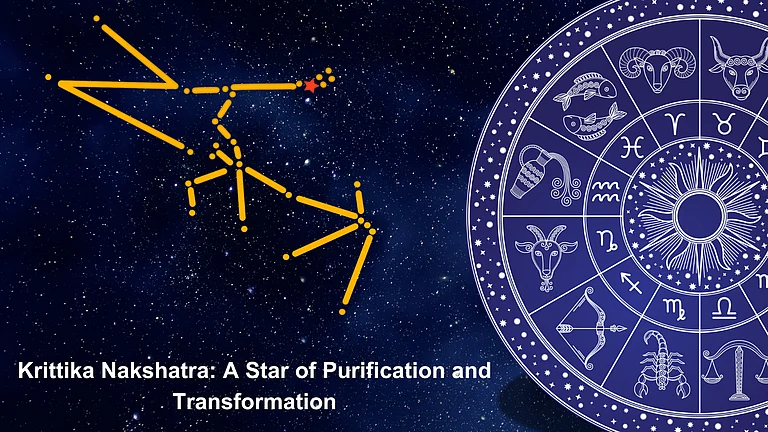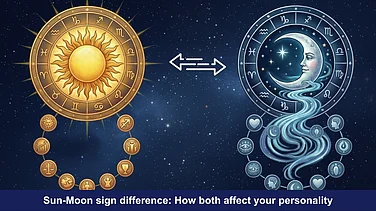The day preceding Diwali is celebrated as Naraka Chaturdashi, which is also called Choti Diwali or Kali Chaudas. It is celebrated in recognition of the victory of morality over evil, as illustrated by the demon Narakasura being vanquished by Lord Krishna. Due to its emphasis on banishing evil spirits and welcoming good ones, the event is highly significant from a spiritual and astrological perspective.
Date and Time of Naraka Chaturdashi 2024:
The Narak Chaturdashi or Choti Diwali, is going to be celebrated on the 31st of October, 2024, just the day before Diwali. Observance of the Auspicious Muhurat, or ritual bath, on Naraka Chaturdashi, typically takes place in the wee hours of the morning; however, this can vary from place to place. It is believed that taking the holy bath at this time can bring good fortune and purify one's spirit, body, and mind.
Date: October 31, 2024
Muhurat for Abhyanga Snan (ritual bath): Early morning hours, typically between 4:30 AM and 6:30 AM.
Astrological Significance of Naraka Chaturdashi:
Astrologically, Naraka Chaturdashi is very important because it has to do with how the planets are lined up and because it is a time for spiritual cleansing. Symbolically, this day is about getting rid of darkness in your life, such as bad planetary effects. Astrologically, today is thought to be a good time to get rid of the bad effects of planets like Saturn (Shani) and Rahu, which can stand for problems, battles, and hard times in a person's life.
By doing the rituals assigned on this day, devotees can improve their karma and overall health as well as balance off negative planetary forces. People believe that today is an excellent day to begin new projects and make great improvements.
Why is Naraka Chaturdashi Celebrated?
Celebrations of Naraka Chaturdashi come from Hindu mythology. Legend has it that Lord Krishna killed the monster Narakasura with the help of his wife Satyabhama and Goddess Kali. Narakasura was a terror to both heaven and earth. Narakasura had captured 16,000 women and taken Aditi, the mother of the gods, earrings. His loss is a sign that good has won over evil, light over darkness, and freedom from pain and bad things.
Naraka Chaturdashi is a celebration of Lord Krishna's victory over Narakasura. One thing you need to remember is that this festival reminds followers that dedication, morality, and divine grace may vanquish any evil demon. In addition, the event celebrates independence from oppression and the liberation of spirits from negative karma.
How is Naraka Chaturdashi Celebrated?
Naraka Chaturdashi is celebrated with many practices that are meant to cleanse the body and soul and get people ready for the bigger Diwali celebrations that come next.
Let's understand the key components of the celebration chronologically:
1. Abhyanga Snan (Ritual Bath):
The Abhyanga Snan is considered to be the most important ceremony of Naraka Chaturdashi. True believers in the faith rise before the sun rises and bathe. A symbol of cleansing, this bath is usually taken with aromatic oils and herbs. This particular day is believed to be the day one of all sins, negativity, and afflictions brought on by demonic powers cleansed by bathing.
2. Lighting Diyas:
People used to light the ‘pradeep’ after cleaning their homes. They used mostly diyas, or clay lights, to drive away darkness and negativity as soon as the bath ended. The lighting of lamps or lighting the diyas is the essential aspect of the celebration. This ritual symbolises the victory of light over darkness and positivity.
3. Offering Prayers to Lord Krishna and Goddess Kali:
The main thing of this puja is that people usually offer their prayers to Lord Krishna, Goddess Kali, and Yama, the deity of death. Devotees are doing this in the hopes of receiving protection from untimely death and the removal of darkness from their lives. These deities are honoured with special offerings, which may include flowers, sweets, and fruits, among other things.
4. Visiting Temples:
On this day, a great number of devotees go to temples dedicated to Krishna or Kali in order to pray. A ritual known as Yama Tarpana is also performed in certain locations. The purpose of this ritual is to placate Yama and seek protection from death and harmful karmic repercussions.
5. Puja at Home:
Puja is a form of worship that is performed by devotees in their homes. This type of devotion includes the recitation of sacred hymns, the lighting of incense, and the offering of naivedya, which are food offerings, to the gods. Compared to the regular Diwali celebrations, Choti Diwali puja is typically less complicated, yet it still carries the same level of spiritual significance.
Festive Traditions and Rituals of Naraka Chaturdashi:
1. Cleaning the House:
People clean their homes before doing any routine to get rid of any bad energies and make sure that only good vibrations flow through them. It is said that cleaning your home on Naraka Chaturdashi will bring you wealth and happiness in the coming year.
2. Applying Ubtan:
People on this occasion used to make an ubtan, which is mostly a paste of plants, with fragrant things like rose water, turmeric, and sandalwood. People think that applying this paste will clean their bodies and souls and give them a fresh start in the new year. It is used before taking a bath.
3. Lighting Crackers:
In many places, people used to enjoy Diwali with cracking fireworks, which are thought to drive away evil and bring luck and happiness.
4. Sharing Sweets:
Food is a big part of this Hindu holiday, as it is with most of them. As a sign of love and happiness, sweets like laddoos, barfi, and halwa are made and shared with family and friends. People also think that sharing sweets is a good way to spread happiness.
It is important to remember that good will always win over evil and that light can drive out darkness on Naraka Chaturdashi. It's a day to get rid of bad things in your body, mind, and soul, embrace your spiritual light, and get ready for the bigger Diwali party. Naraka Chaturdashi is a time for people to connect with their spiritual selves and ask for divine direction for the coming year. It has deep mythological roots, powerful rituals, and astrological meaning.





























